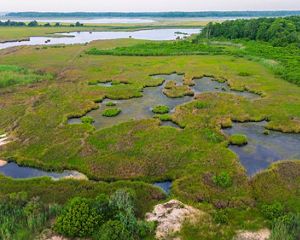Delaware Oceans and Coasts
Learn how The Nature Conservancy (TNC) is working with partners in the Bayshore landscape to advance research and policy for coastal resilience.
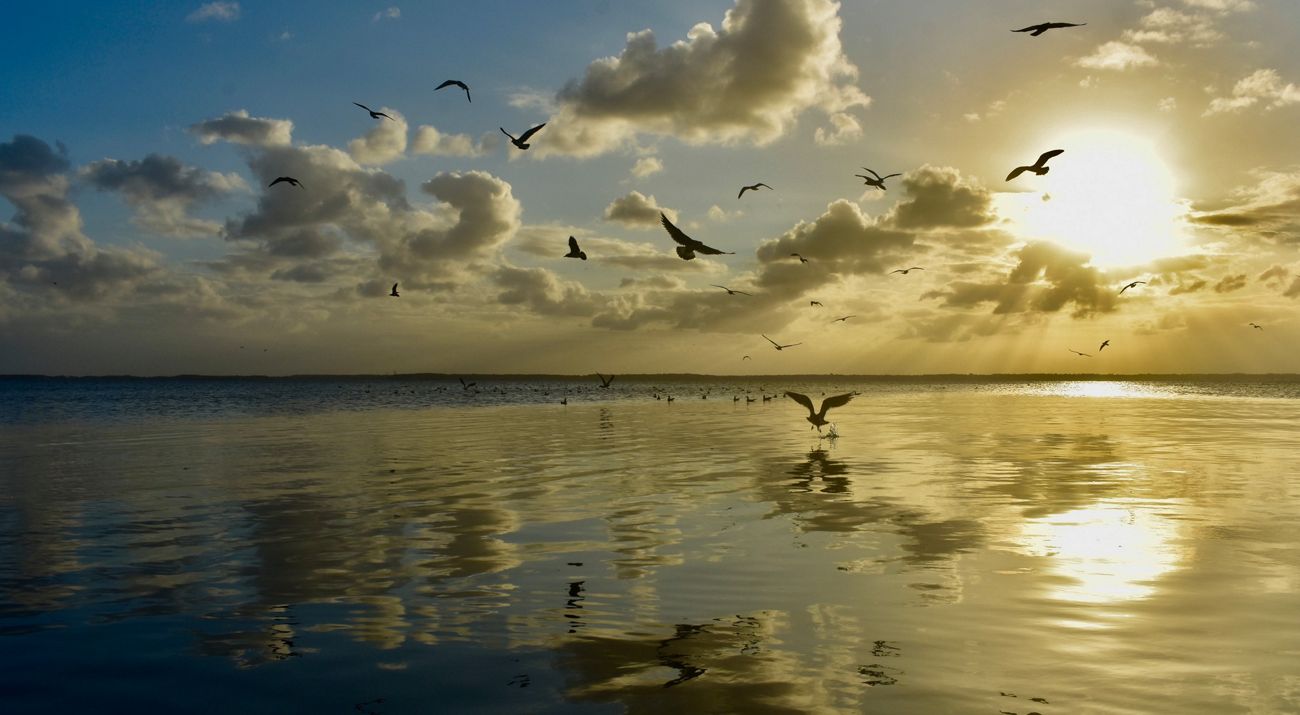
Stretching from the mouth of the Delaware River in southern New Castle County to the Atlantic Ocean, the Delaware Bayshore hosts more than 50 miles of tidal shoreline backed by a variety of dunes, tidal salt marshes, freshwater wetlands and maritime forest. These natural areas serve as critical habitat for a number of economically and recreationally important horseshoe crabs, fish species and migratory birds, including the federally threatened red knot, a shorebird that flies 9,300 miles from South America to the Arctic each spring.

Marshes and wetlands also provide benefits to farmland, property and inland communities that call the Bayshore home. Healthy coastal marshes protect our coasts during heavy storms—which are becoming more frequent due to climate change—by mitigating inland flooding, which can damage infrastructure, homes and personal property as well as ruin agricultural fields. Marsh vegetation also helps prevent erosion and acts as a natural filter of sediment and nutrient pollution.
With sea level predicted to rise 9-23 inches by 2050 and up to 5 feet by 2100, these highly productive coastal habitats will need to adapt and migrate inland. With proper conservation planning and community-led action, however, the real extent of marsh habitats could increase or even expand.
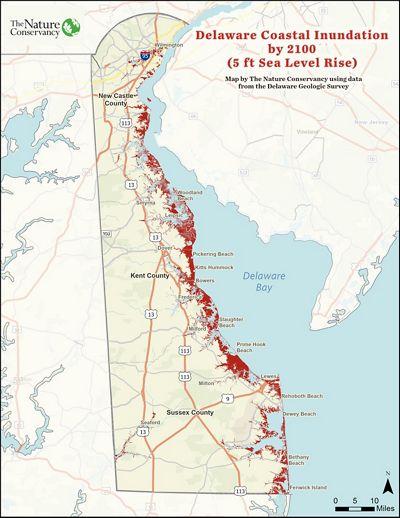
The Nature Conservancy (TNC) is committed to working with partners throughout the Delaware Bayshore landscape to advance coastal resilience and climate adaptation, including strategies to conserve additional lands, facilitate marsh migration, increase the resiliency of vulnerable human communities and restore critical habitats for our iconic migratory fish, birds and wildlife.



Hear from Will Helt, Director of Delaware's Oceans & Coasts Progam
Will Helt joined our Delaware team in July 2022 and brings extensive experience in managing coastal restoration and monitoring projects, from oyster reef creation to green stormwater infrastructure. He will serve as the chapter’s first director of oceans and coasts, focused on implementing science-based strategies to improve the climate resilience of coastal habitats and natural communities along the Delaware Bayshore while incorporating nature-based infrastructure solutions that help human communities adapt to the impacts of sea-level rise and facilitate marsh migration.
What are The Nature Conservancy's priorities to address climate change?
TNC is working to tackle climate change at two levels, addressing the cause and the impact through mitigation and adaptation. Climate change mitigation is accomplished by reducing greenhouse gas emissions and pursuing policies that prioritize clean energy. Our climate adaptation work uses nature as a tool to increase the resilience of critical habitats and communities. There is no one-size-fits-all approach; adaptations must be tailored to the needs of a community and nature. As sea levels rise and storms become more frequent and intense, we aim to ensure important coastal habitats persist and residents are protected from disasters.
How are coastal marshes impacted by sea-level rise, and why is TNC prioritizing them?
We know that as sea levels rise, freshwater marshes are threatened and saltwater marshes will move inland. TNC's goal is to help facilitate the inland migration of coastal habitats as sea levels rise, because these habitats, such as salt marshes, provide numerous ecosystem services and benefits to human communities, such as water filtration, habitat for important migratory birds and fishes and protection from storm surge. To accomplish this, we will use a combination of nature-based solutions to address saltwater inundation and conserve adjacent lands.
TNC is working to increase its diversity, equity and inclusion work. How do you see the connection between diversity, equity and inclusion work and the oceans and coasts program?
Generally, negative environmental impacts disproportionately affect already vulnerable and marginalized populations, and climate change will only exacerbate this disparity. TNC’s work along Delaware’s Bayshore is committed to ensuring socially vulnerable coastal communities’ concerns are equitably heard and to prioritizing nature-based solutions that most benefit these groups
Coastal Resiliency
TNC is working to identify and prioritize sites where nature-based solutions will enhance coastal resilience in Delaware.
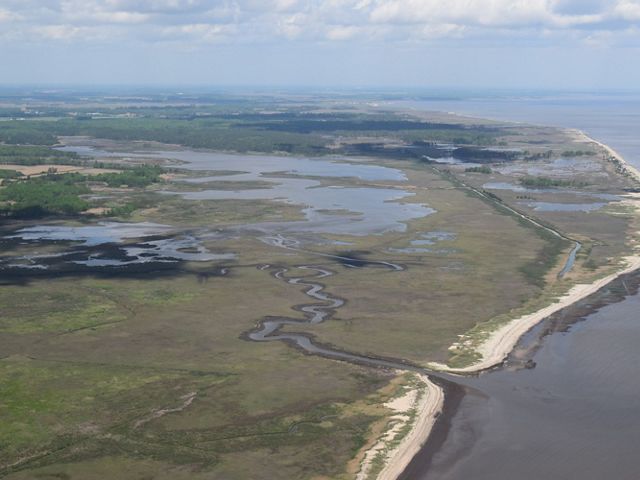
A 2017 study by TNC estimated the resiliency of more than 10,000 coastal sites from Maine to Virginia. Resilient sites are those that are most likely to continue functioning in the face of sea-level rise. TNC is working to allow at least 50% of all resilient coastal wetlands and maritime forests to shift into new habitats by 2035. We also want to work with at-risk communities along the coast to use new and existing resources to better position themselves for climate impacts.
TNC is working to identify and prioritize sites where nature-based solutions will enhance coastal resilience in Delaware. With support from the Longwood Foundation, TNC will create a Coastal Resiliency Roadmap for Kent and Sussex Counties. The roadmap will build capacity, awareness and support for land protection work, in addition to assembling a coalition of local and regional partners who are committed to scaling up the impact and addressing the needs of underserved communities.
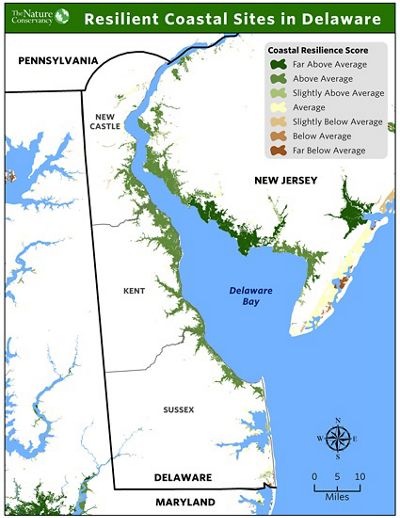
The Coastal Resiliency Roadmap will help at-risk communities identify new and existing sources of funding for infrastructure in order to adapt to sea-level rise. Our work will focus on building partnerships with key actors in the coastal space, including but not limited to residents, local policymakers, business leaders, civic groups, homeowners associations, farmers, nonprofit groups and many other stakeholders.
Our approach consists of four critical steps:


Policy
TNC engages at the local, state and federal level to support policies aimed at building climate resilience and supporting sustainable, equitable outcomes for people and nature along the Bayshore.
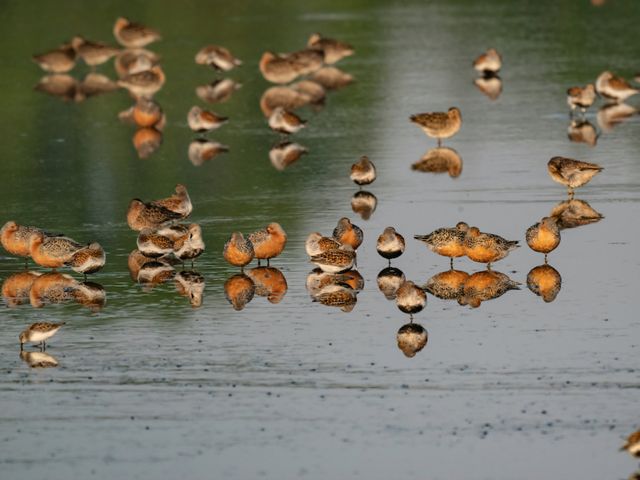
Our 2024 advocacy agenda for coastal ecosystems includes the following:
-
Support the creation of aggressive climate change policies on the state and local level in Delaware that address rising waters, flooding, carbon capture, green infrastructure and the needs of overburdened populations. Read More
-
Work with partners like the Delaware Land Protection Coalition to advance a statewide land conservation strategy that protects additional lands, facilitates marsh migration as sea levels rise, has an equity framework and helps protect Delaware’s iconic species. Learn about the Delaware Land Protection Coalition
We Can’t Save Nature Without You
Sign up to receive monthly conservation news and updates from Delaware. Get a preview of Delaware's Nature News email


